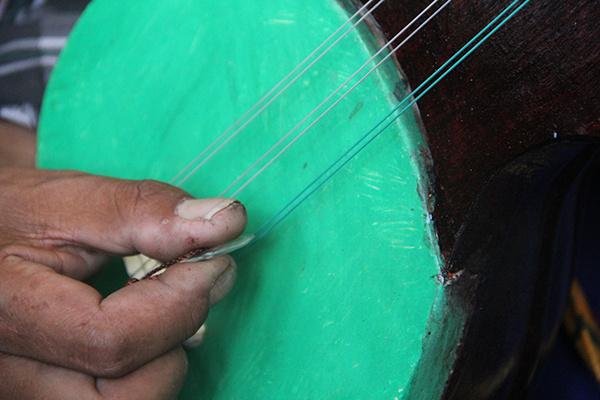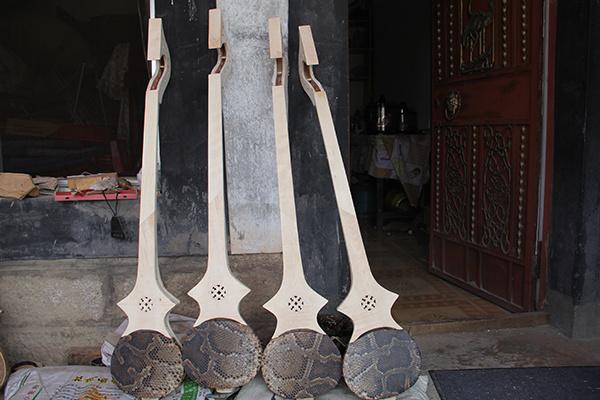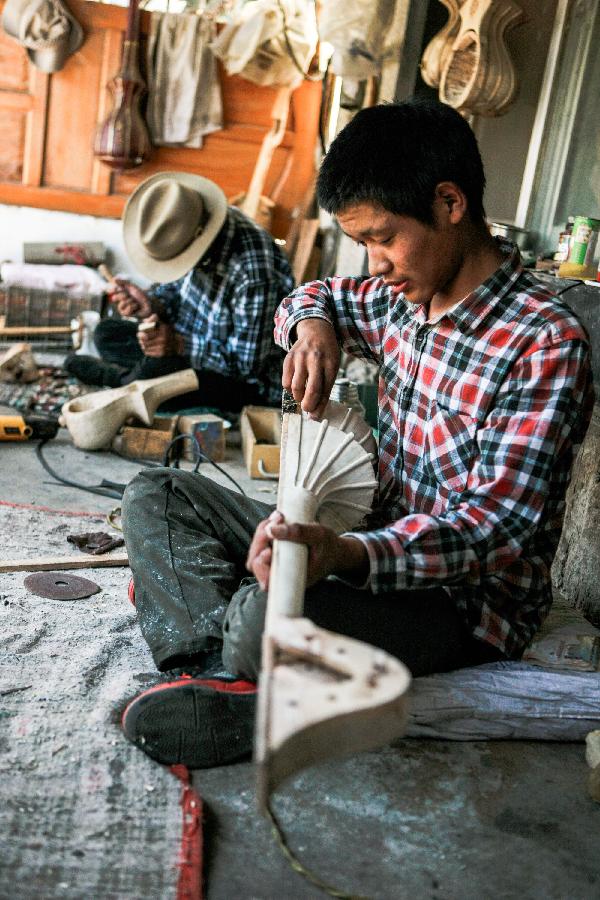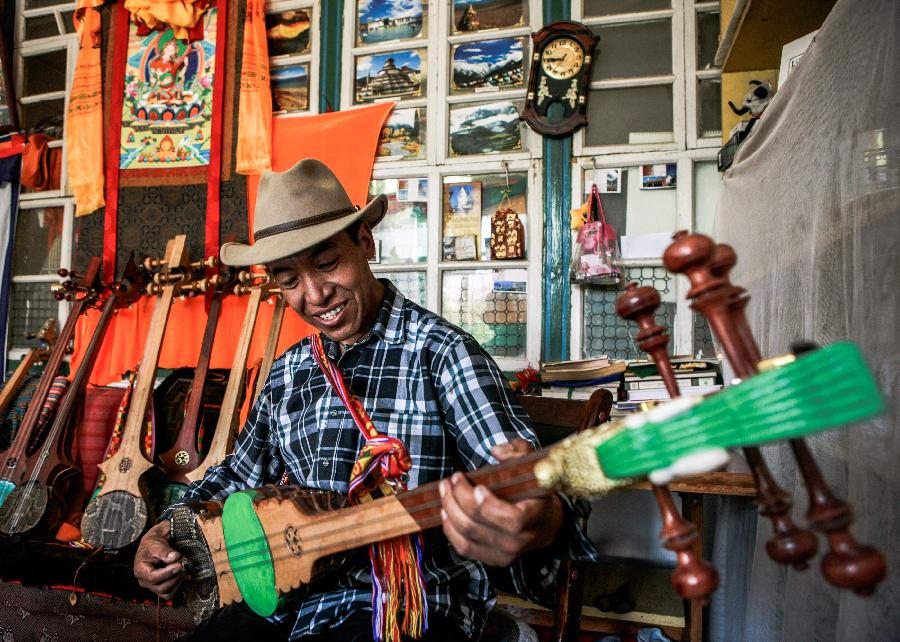Zhanian: A traditional Tibetan musical instrument
Zhanian is a Tibetan musical instrument that has a long history. According to historical records, it originated from theNgari area, later on it was gradually spread throughout Tibet, and up until now it has a 600 to 700 hundred year-long history. “Zhanian”means “the moving sound”, there are several types such as six-stringed, eight-stringed and sixteen-stringed ones. Amongst which, the six-stringed Zhanian is the most popular, widely used in various places in Tibet. The Zhanian normally is made from cedar wood, red wood, walnut tree wood or sandalwood, its skin is made of sheepskin or python skin. In 2014, Zhaxi was listed in the 4th batch of the National Intangible Heritage.

Six-stringed Zhanian[Photo/ Tibet.cn]

Zhanian made of python skin [Photo/ Tibet.cn]

Zhanian making[Photo/Xinhua]
 |
|
An artist is playing Zhanian [Photo/Xinhua]
Your Comment
Name E-mailRelated News
-
;
-
-

-
Traditional Tibetan instruments at Tibet Museum
Recently a group of Tibetan traditional instruments was showcased at Tibet Museum.
-
-
-

-
Religious instruments used in Tibetan Buddhism: photo
Religious instrument refers to the vessels and utensils used by monk during Buddhist events and religious rituals. The religious instruments used in Tibetan Buddhism are various and divine with majesty.
-
-
-
Flutist revives ethnic musical instrument
"This is the only eagle flute performed on stages at home and abroad", said Tibetan leading flutist Tseten, as he took out a tailor-made silver box from his hand bag and carefully fetched out his flute wrapped in a red handkerchief.
-
-
-
Visual feast of Tibetan Buddhist instruments
Photos of various Tibetan Buddhist instruments offer audience a general view of the cultural relics at the exhibition held in south China's Guangdong Province, even if one cannot view the exhibition in person.
-
Based in Lhasa, Tibet Vista is a Tibet travel agency that specialized in Tibet permit, and Tibet tours for both private and group travelers at a local price!
•4 Days Lhasa City Group Tour from USD 460 •8 Days Everest Base Camp Group Tour from USD 850 •15 Days Mt.Kailash Group Tour from USD 1780 •2016 Tibet Train Tours from Beijing, Shanghai, Chengdu, Xining,etc










